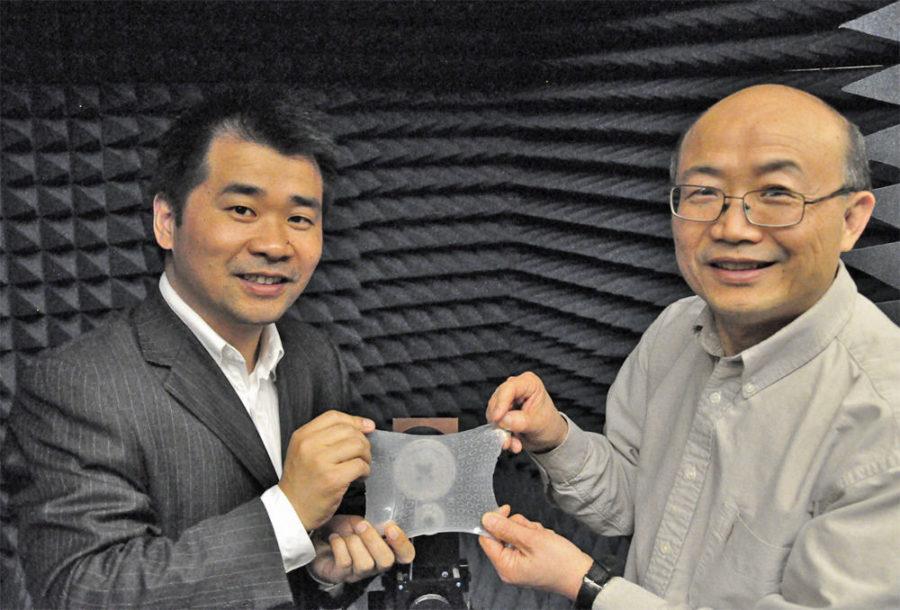ISU professors create “cloaking skin”
March 29, 2016
Like something straight out of a science fiction movie, researchers at Iowa State have created a flexible material that will make any object invisible to radar waves.
The idea came after researchers noticed a problem with a wall designed to cloak objects. Items placed behind the wall could still be seen in certain circumstances. To remedy the problem, the research team decided to make the cloaking material flexible so it could be wrapped around objects.
“In the material we have … a ring, but there’s a cut [in the ring] … this configuration can be called a resonator,” said Liang Dong, associate professor of electrical and computer engineering. “This resonator plays the role to trap electromagnetic waves or radar waves at particular wavelengths.”
The rings are made from a form of liquid metal that is encapsulated inside a flexible polymer. The process to create the rings isn’t simple, Dong said, adding that one of the graduate students who worked on this project happened to invent a way to create them.
The ring inside acts as a resonator that traps electromagnetic waves. However, these waves could have different wavelengths and the flexible material of the cloaking skin allows for all different wavelengths to be captured, Dong said.
Making the product is actually less expensive than one might think. While the process of creating the metal rings is economically and human intensive to be done correctly, the polymer itself is actually quite inexpensive, Dong added.
Jiming Song, professor of electrical and computer engineering, explained how the “meta-skin” was tested in the Electromagnetic Antenna Lab at Coover Hall.
To test the material, researchers wrapped it around a bar and placed it inside an area surrounded by “microwave absorbing material,” Song said. An antenna then fired waves at the object while another antenna recorded the waves that bounced off of it.
Any object that has the meta-skin applied to it is virtually invisible, according to the graphs that Song and the team published in their paper.
The team has filed for a patent and hopes it will be accepted soon, so companies can start contacting them to use their “meta-skin,” he said.
Song and the team hope the military will want to use this product, but they also hope future research efforts can go into using their discovery to do other things.
For example, they hope to see work put into protecting bodily implants from harmful electromagnetic waves. They also hope to develop a way that radio-frequency identification chips (RFIDs) can be placed on metal objects and still have the information on the chip be readable.







